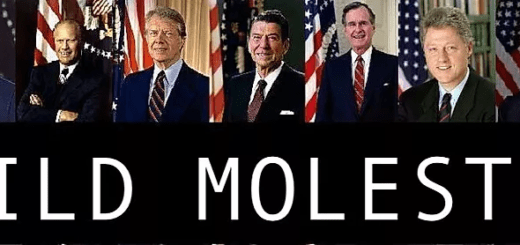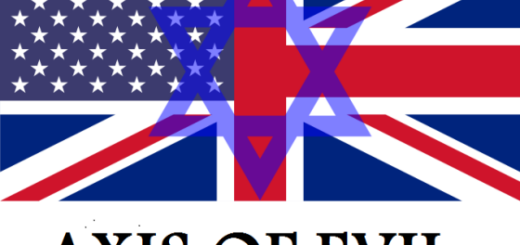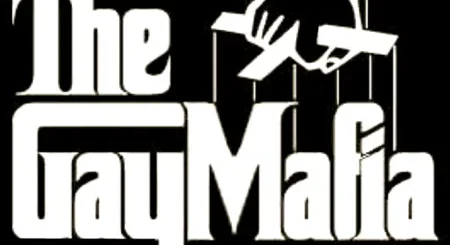‘The Nordic countries are renowned across the globe for their welfare systems. Oddly enough, homelessness is growing in metropolitan areas across Scandinavia, partly as an aftershock of the migrant crisis.
In recent years, Denmark has seen a marked increase in homelessness, the spike being most obvious among people under 30. “We have seen a sharp increase in the number of young homeless people since 2009. Many of them have mental problems or come from socially vulnerable strata, but also have many other backgrounds,” Lars Benjaminsen, a researcher at The Danish National Centre for Social Research (SFI) who masterminded the recent survey on homelessness in Denmark told Danish newspaper Avisen.’
Read more: Homelessness Snowballs in Scandinavia as Side Effect of Migrant Crisis
My Comment: 200 to 300 Children Are Committing Suicide in Pine Ridge Reservation Every Year-Does Anyone Care????
Racism at Core of Native Teen Suicides in Pine Ridge
At least 11 children between the ages of 12 and 17 have committed suicide in Oglala Lakota County since December. A high-school English teacher and advocate for indigent defendants reflects on how racism destroys kids’ lives.

Image: Wkmwiki/Wikimedia Commons
At least 11 children between the ages of 12 and 17 have committed suicide in my county since December. The heartbreaking details vary from child to child, but their families and this community–in the newly renamed Oglala Lakota County–feel the voids left by their absences just as deeply each and every time.
Between December 1 and March 23, Pine Ridge Hospital treated 241 patients under 19 who actively planned, attempted or committed suicide. These numbers don’t account for unreported cases or for those who were treated in neighboring counties. At this rate, 37 young people in a county that only has 5,393 inhabitants under 18 will be gone by the end of 2015. Moreover, statistics from Pine Ridge Indian Health Services show teen suicide numbers have gradually increased over the last seven years. In the same four-month period last year, for example, there were no suicides in Pine Ridge. In 2012, only one.
If this were happening in any other county in America, politicians would be calling on their governor to intervene. But since Oglala Lakota County is part of the Pine Ridge Indian Reservation in South Dakota, not many people outside this community seem to know or care about what’s happening here.
In Pine Ridge, site of the massacre at Wounded Knee, commonplace teen angst is exacerbated by extreme poverty, historical trauma and racial discrimination. As a high school English teacher and newcomer, I understood early on that kids here come to know mortality much sooner than most. At 26, I’ve only been to one funeral: for my great-grandmother, who passed away peacefully at 97. Ask my students and they’ll tell you that when it comes to funerals they’ve lost track.
When I ask non-Native South Dakotans to help me understand why suicide waves like these happen, their explanations too often invoke–either directly or through insinuations–the notion of the “Indian Problem,” a twisted, blatantly racist policy the U.S. government first used in the 1880s to dissolve reservations and force Native Americans to assimilate to white culture.
Only now the “Indian Problem” is employed to blame Natives for the poverty, substance abuse and unemployment that’s all too common throughout Indian Country. “They bring it on themselves,” too many strangers tell me when they learn where I live and work.
But there is a conveniently ignored connection–a direct one, I would argue–between the hopelessness felt by some young people here and their experiences off (and the impositions made by outsiders onto) the reservation. These experiences are what make these suicides bigger than Pine Ridge.
In January, at a hockey game in nearby Rapid City, white adults sitting in a private box above 57 middle-school students from Pine Ridge sprayed the children with beer and told them to “Go back to the reservation.” Instead of 57 charges of child abuse and assault in response, like some had suggested, only one man ended up with one charge of disorderly conduct.
In December, while the nation’s eyes were on Ferguson, a Native man was killed by a white police officer a day after attending a #NativeLivesMatter anti-police brutality rally in Rapid City. The intoxicated man was shot for appearing threatening with a steak knife. His wife, the only other witness, denies any aggression on his part. The attorney general of South Dakota deemed the five fatal gunshots justified in the report he released.
In November a pack of feral dogs killed an 8-year-old girl here. She was sledding in her backyard. In response, the tribe ordered all stray dogs on the reservation euthanized. This enraged predominantly white animal rights activists from off the reservation, who called the killings inhumane and mobilized to save what dogs they could, oblivious to the poverty and lack of services here that allows the feral dog problem to exist.
Let’s be clear. These events tell Native children one thing: “Your lives are not valued. You do not have a place in the world beyond the reservation.”
We can all, regardless of race and socio-economic class, understand the desire to leave the place we’ve come from, to experience something beyond the lives we’ve known thus far. But for many children in Pine Ridge, however, leaving home to gain any economic advantage seems overwhelming because of the racism and even outright hostility that can be so commonplace in the outside world.
Davidica Young Man, 23, who grew up on Pine Ridge, says racism in all forms gets engrained in you early on as young person here. Just days after the events at the Rapid City hockey game controversy in January, Young Man and her friends also had beer poured on them–this time at a bull-riding event at the Black Hills Stock Show and Rodeo.
“I noticed, as I got older and started going off the rez more, that there are people who tend to follow us around or give us looks that make it seem like we’re really suspicious,” she told me as we sat in my car in the reservation hamlet of Oglala. “I still don’t carry a purse into stores because they always used to ask me to open it before leaving.”
Anpo Stars Come Out,* an 18-year-old high school senior from Pine Ridge, agrees. “It’s normal for teens to deal with racism of some kind when they leave the reservation.” About a month ago, police stopped Stars Come Out in downtown Rapid City for legally smoking a cigarette on a public sidewalk. The officer pulled over, lights flashing, got out of his patrol car and asked to see his ID.
What may seem like a harmless police stop to some can mean much more to those directly involved. A 2013 study lead by the University of Melbourne linked racism to youth depression and anxiety. Depression and anxiety are, of course, foundational to suicidal thoughts. “The review showed there are strong and consistent relationships between racial discrimination and a range of detrimental health outcomes such as low self-esteem, reduced resilience, increased behavior problems and lower levels of wellbeing,” wrote lead researcher Dr. Naomi Priest after concluding her review of 461 predominantly American cases.
Interestingly, teens’ experiences of racism in the Melbourne study were most commonly interpersonal, not institutional or systemic. Racism experienced beyond the reservation is often intrapersonal as well, and quickly internalized. It’s normal for young people around here to get bullied with racism.
What’s worse is that they slowly get used to it and start thinking–It’s no big deal that someone just called me a prairie n-word or a dirty savage,” observed Young Man. What’s more, it is not uncommon for Young Man and her peers to hear horror stories from off the reservation that go well beyond racial slurs. “You’ll hear things like, “Well, there was once a Native guy who was drugged by all these white dudes in a truck. He died and they ditched his body.” Fact or fiction, the stories have their desired effect. “All that stuff scared the crap out of me as a teenager,” said Young Man.
Many white South Dakotans are happy to have Native Americans dressed in traditional clothing on the state tourism website or spending money at their businesses. But when it comes to making space for contemporary Native voices, the barricades built around the reservation often don’t allow free passage. This is the future Native children see in many parts of this country. Add high-profile examples of racism, the daily unreported microaggressions Native kids face and the structural obstacles that extreme poverty creates, and you start to understand why suicide waves persist. This narrative is not unique to Pine Ridge, though it is certainly exacerbated by American colonialism’s legacy here. It can be found in other low-income communities of color in the United States too. In South Central Los Angeles, South Side Chicago or the South Bronx, the message kids get too often is: “You do not matter.”
I recently visited a second grade classroom in Pine Ridge. The students were busy writing e-mails to their pen pals in Asheville, North Carolina. The messages were typical in every way: “I love playing soccer,” wrote one student. “Ms. Chelsea is my teacher,” wrote another. The kids took goofy selfies and sent those along as well. I couldn’t help but think that these exchanges should be happening with kids in nearby Hot Springs, or any other town in South Dakota. It seems so simple, but students in grade schools throughout the state and the nine Indian reservations here should be better connected. Only by educating children early on to know and value the diversity of their neighbors will we have the opportunity to shape the future of a more inclusive and prosperous society. Establishing pen-pal relationships between kids makes it harder for them to grow up hating someone whose story they know.That’s what it comes down to–knowing each other’s stories.
One of suicide’s latest victims in Pine Ridge, a teenage girl, had a story too. According to friends on Facebook she wanted to be a singer or an actress. Peers, however, told her that she would never be able to because she was a “dirty Native.” She needed to have “more white in her” if she really wanted to be someone, they told her.
That was one of the stories that went around about why she was so upset before she died, because “people were saying she was too dark-skinned,” said Young Man. Her story–like 10 others’–has ended far too early.
Dominique Alan Fenton is an 11th grade English teacher on the Pine Ridge Indian Reservation. In addition to teaching, he does investigative work behalf of indigent defendants in federal and tribal court. He is a certified legal advocate in Oglala Sioux Tribal Court.













